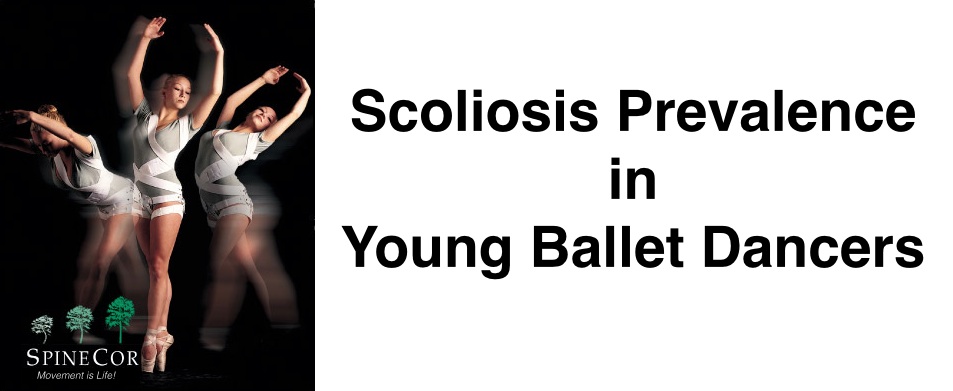In a study on scoliosis in young ballet dancers by Michelle P. Warren, M.D., J. Brooks Gunn, Ph.D., Linda H. Hamilton, L. Fiske Warren, M.D., and William G. Hamilton, M.D. in the New England Journal of Medicine 1986 it was found that there was a significantly higher incidents of scoliosis in ballet dancers than the general population. The incidents of scoliosis in the general population is around 2 -4 %.
Study Abstract: In a survey of 75 dancers (mean age, 24.3 years) in four professional ballet companies, they found that the prevalence of scoliosis was 24% and that it rose with increases in age at menarche. Fifteen of eighteen dancers (83 percent) with scoliosis had had a delayed menarche ( onset at 14 years or older), as compared with 31 of 57 dancers (54 percent) without scoliosis. The dancers with scoliosis had a slightly higher prevalence of secondary amenorrhea (44 percent vs. 31 percent) and the mean duration of their amenorrhea was longer (11.4±18.3 vs. 4.1±7.4 months), and they scored higher on a questionnaire that assessed anorectic behavior.
These data suggest that a delay in menarche and prolonged intervals of amenorrhea that reflect prolonged hypoestrogenism may predispose ballet dancers to scoliosis.
This study was from the Departments of Obstetrics and Gynecology, Medicine, Pediatrics and Orthopedic Surgery, St. Luke’s–Roosevelt Hospital and Columbia College of Physicians and Surgeons, New York. Address reprint requests to Dr. Warren at St. Luke’s–Roosevelt Hospital, Antenucci Bldg., 428 W. 59th St., New York, NY 10019.

